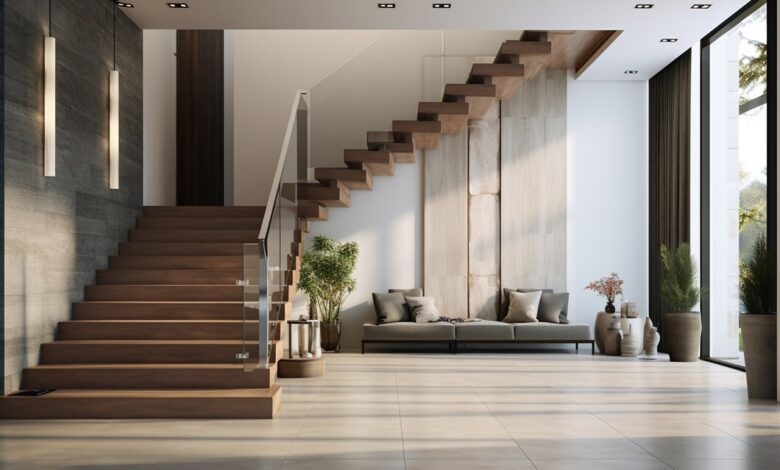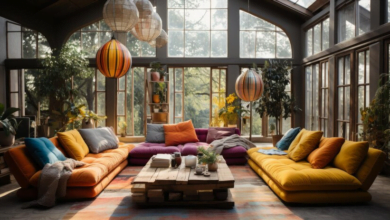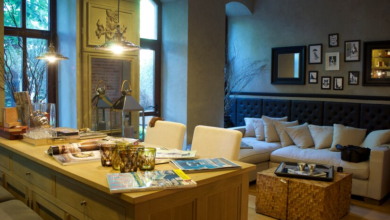
Isn’t it fascinating how we often overlook the role flooring plays in setting the perfect ambiance inside a room? Welcome to the world of design, where every detail matters, especially when it comes to interior design rules for flooring. In this comprehensive guide, we’re diving deep into the essential principles that determine the selection and arrangement of flooring materials to lift any space from ordinary to extraordinary.
Understanding the Interior Design Rules for Flooring Selection
Before we step into the nitty-gritty of flooring design, it’s crucial to grasp the fundamental principles that guide your choices. Interior design rules for flooring begin with understanding the functionality, aesthetics, and overall atmosphere you aim to achieve in a room. Here are some key factors to consider:
Functionality:
The first rule of thumb in selecting flooring is to match it with the room’s function. For high-traffic areas like the foyer, kitchens, bedrooms, and stairs, durable materials such as ceramic tile or hardwood flooring are ideal. Conversely, plush carpets or area rugs can add warmth and comfort to living spaces or bedrooms.
Cohesive Design:
Maintaining visual continuity throughout your home is essential for creating a well-integrated design. Choose flooring materials that flow seamlessly from one room to another, creating an effortless transition between spaces. Consistency in flooring type, color, or texture enhances the overall appearance of your home.
Balance:
Achieving the right balance between flooring materials and other design elements is crucial. If your furniture and decor are bold and feature eclectic collections, go for neutral flooring to serve as a backdrop. On the other hand, if your furnishings are minimalist, consider incorporating patterned or textured flooring for visual interest.
Also Read: 10 Industrial Design Trends
Strategic Flooring Placement Techniques
Now that you understand the fundamental flooring design principles, let’s explore how strategic placement can further improve your interior design scheme. Interior design rules for flooring extend beyond material selection; they encompass the placement and arrangement of flooring elements to optimize space and aesthetics.
Direction:
Laying your flooring in a certain direction can really change how big and open a room feels. It’s usually best to lay the flooring parallel to the longest wall or in the direction where the natural light comes in to make the room feel more spacious and connected.
Pattern Plays:
Adding patterns to your flooring design can make a room more interesting and give it some dimension. But it’s important to not go overboard – balance the patterns with some solid colors without overwhelming the room. You could try using patterned tiles as accents or focal points within an otherwise neutral flooring scheme.
Strategic Flooring Zoning:
Dividing a large space into distinct zones through flooring can help delineate different functional areas while maintaining a well-put-together design. It could be creating a spot for dining in an open-concept living space or creating a cozy reading nook.

Flooring material considerations
Of course, you can only apply those interior design rules for flooring once you have selected your flooring material. Below are a few popular flooring options to consider for your home:
- Hardwood flooring can immediately enhance the feel of your room, bringing in a cozy and timeless charm that works well in any space.
- Ceramic tiles are durable and adaptable, making them perfect for busy areas like kitchens and bathrooms. They also add a touch of elegance to your interior design.
- Opting for laminate flooring gives you a budget-friendly option that doesn’t sacrifice style. You’ll find a wide range of colors and textures to match your taste in this flooring type.
- Luxurious carpeting can turn a room into a comfy sanctuary, offering a soft feel underfoot and creating a warm and inviting atmosphere.
- Engineered wood flooring combines the beauty of hardwood with added durability, making it an excellent choice for water-prone areas or areas with temperature fluctuations.
- Natural stone flooring like marble or travertine brings a sense of luxury and sophistication to any room, embodying timelessness.
- Vinyl flooring is a practical choice, with numerous designs and patterns that mimic natural materials. It’s easy to maintain and performs well over time.
- Cork flooring is eco-friendly and resilient, providing a soft surface that reduces noise while adding character to your space.
- Concrete flooring is a chic material in modern design trends. Concrete floors exude a modern and minimalist look, offering endless customization options to match any design style, whether you prefer polished or stained finishes.
- Bamboo flooring is both sustainable and stylish, offering a strong and eco-friendly alternative to traditional hardwoods. Its unique grain pattern adds visual appeal to any room.
Conclusion
From understanding fundamental principles like functionality and balance to strategic placement techniques, every detail matters in interior design rules for flooring. Whether you’re choosing durable materials or adding luxurious touches, each decision contributes to the overall aesthetic of your space. And with the right flooring material, from timeless hardwood to eco-friendly bamboo, you can elevate any room’s style. Armed with this knowledge, you’re ready to transform your space in style and comfort from the basics of flooring.
Source: Foyr



